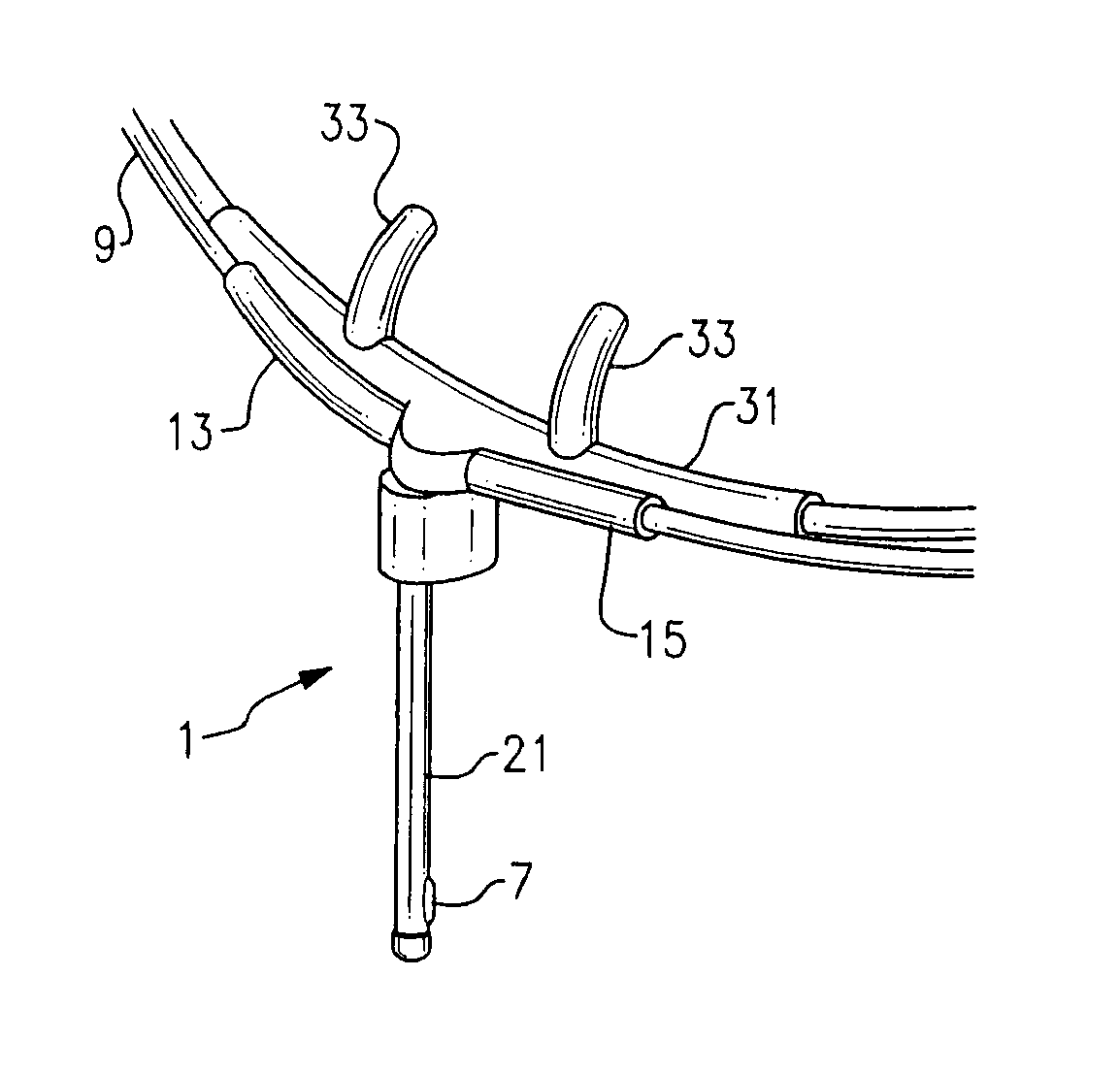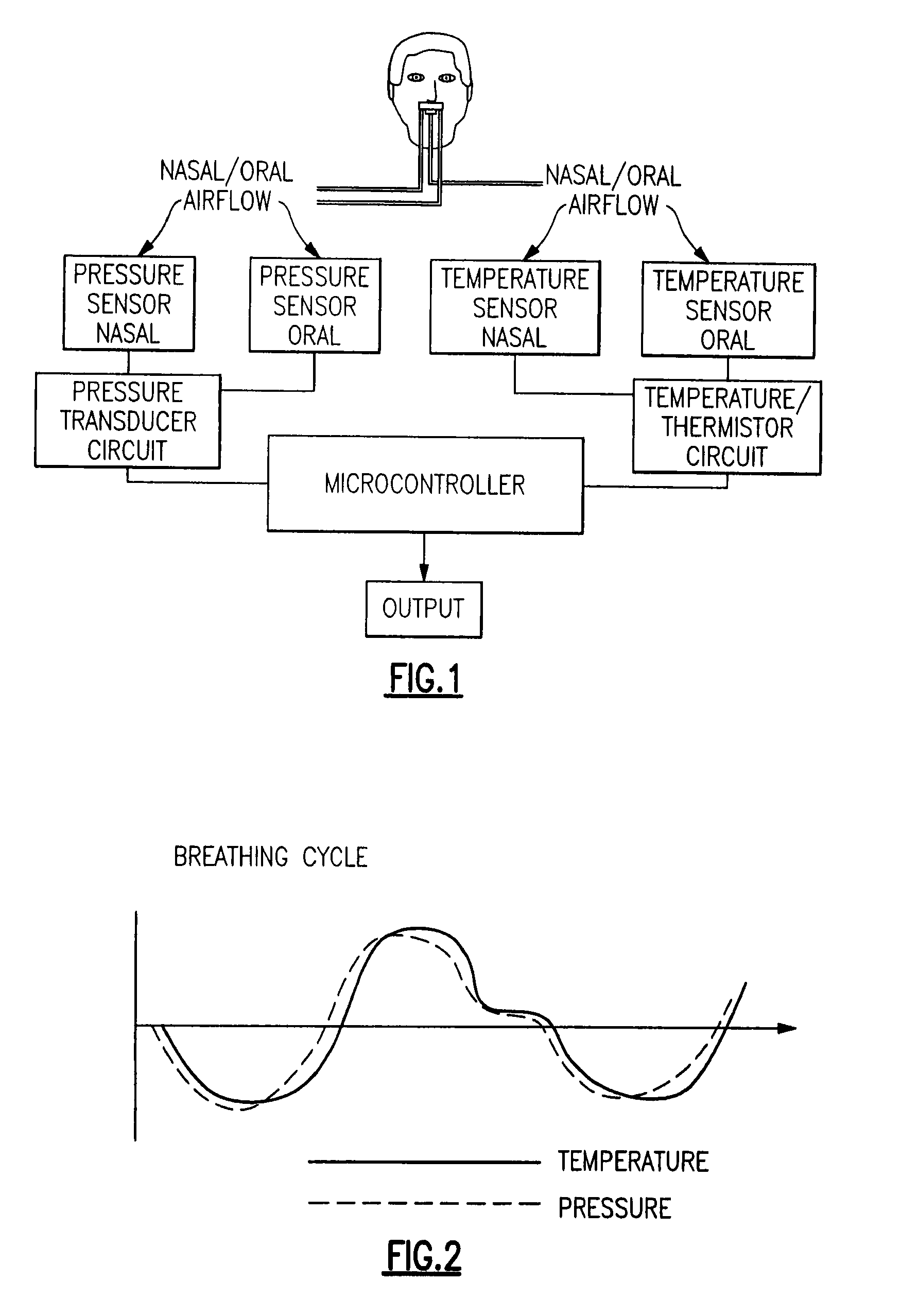Adaptive temperature sensor for breath monitoring device
a temperature sensor and breath monitoring technology, applied in the field of sleep monitoring and diagnosing system, can solve the problems of recurrent failure to breathe adequately during sleep, serious sleep apnea, and other health problems, and achieve the effects of convenient use of coupled nasal cannulas, quick and convenient testing, and quick and convenient checking
- Summary
- Abstract
- Description
- Claims
- Application Information
AI Technical Summary
Benefits of technology
Problems solved by technology
Method used
Image
Examples
Embodiment Construction
[0049]The present invention is directed to an apparatus and method for monitoring and modeling a patient's breathing according to both pressure and temperature measurements. As seen in FIG. 1, from oral and nasal airflow of a patient oral and nasal temperature measurements are obtained according to temperature changes measured by a thermistor during the exhalation and inhalation interval of a patient during a sleep diagnostic session. A temperature sensor—generally a thermistor although other types of thermocouples and temperature sensors could be used as well—is positioned adjacent the nares (nostrils) of the patient's nose (nasal temperature sensing) and adjacent the patient's mouth (oral temperature sensing). An output signal, from the temperature sensor(s), is conditioned by a thermistor circuit and sent to a micro controller to be processed into acquired air wave and airflow breathing data for input to conventional polysomnography equipment which produces an output representati...
PUM
 Login to view more
Login to view more Abstract
Description
Claims
Application Information
 Login to view more
Login to view more - R&D Engineer
- R&D Manager
- IP Professional
- Industry Leading Data Capabilities
- Powerful AI technology
- Patent DNA Extraction
Browse by: Latest US Patents, China's latest patents, Technical Efficacy Thesaurus, Application Domain, Technology Topic.
© 2024 PatSnap. All rights reserved.Legal|Privacy policy|Modern Slavery Act Transparency Statement|Sitemap



